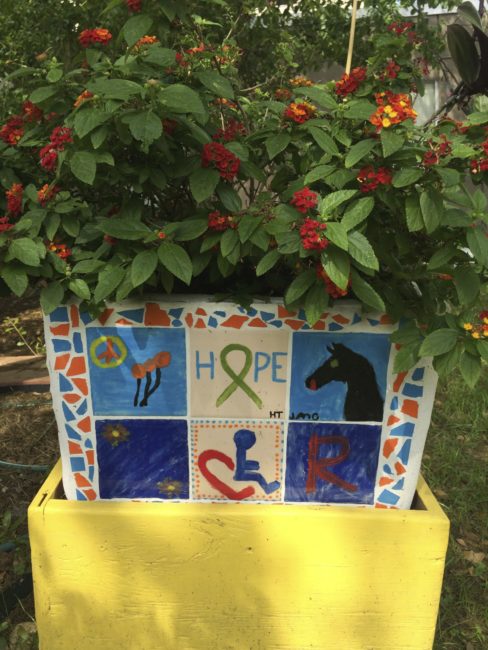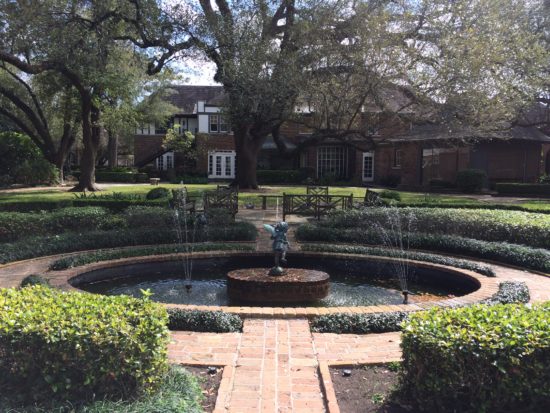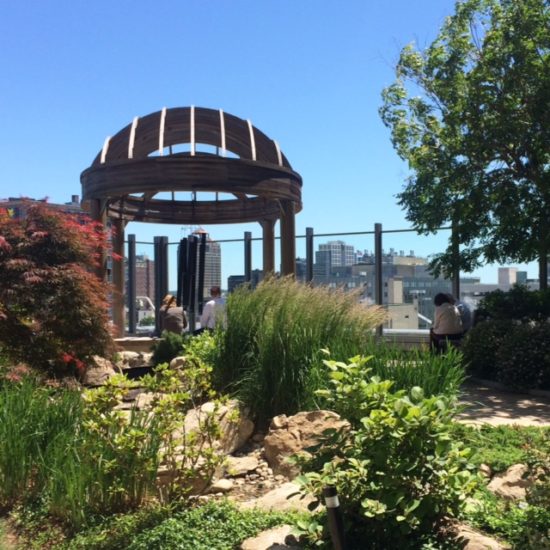My colleague, Dak Kopec, asked me to write a piece on healing gardens for his forthcoming book, Environmental Psychology for Design, and he has graciously given permission to share it with you here on the TLN Blog. Dak is Director of Design for Human Health at Boston Architectural College and has written many books and other publications on the role of the environment in human health. Thank you, Dak!

What is a “healing garden”?
A “healing garden” is a garden or landscape designed for a specific population, place, and intended positive health outcome. The garden’s design (physical aspects) and programming (activities that take place there) are informed by research. The majority of healing gardens, also referred to as “restorative gardens” and “healthcare gardens” are in healthcare facilities including general acute care hospitals, outpatient clinics, assisted living and skilled nursing facilities, mental and behavioral health facilities, hospices, and specialty facilities such as rehabilitation, pediatric, and cancer hospitals and clinics. Garden users include patients or residents, visitors, and staff. Positive outcomes, including stress reduction, are derived through both passive and active nature connection and can take place indoors (via indoor plants, or from viewing nature through a window) and outdoors. A “rehabilitation garden,” “therapeutic garden,” or “enabling garden” is a garden where physical, occupational, horticultural, and other therapies take place. A “restorative landscape” or “landscape for health” is any landscape—wild or designed, large or small—that facilitates human health and well-being (Sachs, 2016).

Why is access to nature important?
Access to nature promotes health through reduction in stress, depression, myopia, pain, fatigue, aggression, impulsivity, and symptoms of Attention Deficit Hyperactivity Disorder (ADHD); and improvement in immune function, bone strength, wound healing, cognition, concentration, emotional resilience, empathy, vitality, relaxation, mood, and satisfaction (Cooper Marcus & Sachs, 2014; Kuo, 2015). Why is nature good for us? Part of the answer can found in the theory of biophilia, “the innately emotional affiliation of human beings to other living organisms” (Kellert & Wilson, 1993, p. 31). Stephen and Rachel Kaplan’s Attention Restoration Theory (1995) is based on the concept that “positive distraction” and “soft fascination” through nature engagement lead to mental and cognitive restoration from the stress caused by “directed attention.” More recent research has identified enhanced immune functioning as a potential “central pathway” in explaining the connection between nature contact and positive health outcomes. Nature, in hospitals and elsewhere, plays a salutogenic role in both disease prevention and health promotion (Kuo, 2015).

What elements are important in healing gardens?
Safety, the perception and safety, and comfort are all essential in healthcare gardens. Good design and proper maintenance can address challenges such as climatic extremes, inclement weather, pollen, and harmful bacteria and insects. For example, a choice of sun and shade enables users to be outside throughout the day. Covered seating areas, especially at the garden entrance, allow even the frailest of users to venture out when the weather is not ideal. Gardens should be designed so that even when they are not physically accessible, they can be viewed from indoors and are a pleasure to see in all four seasons. According to Roger Ulrich’s Theory of Supportive Garden Design (1999), healing gardens should provide 1) nature engagement (plants, animals, water, fresh air), 2) a sense of control (for example, doorways that are easily navigable, and areas where people can find privacy), 3) opportunities for social support, and 4) opportunities for movement and exercise. While it may seem obvious that nature should be present in a healing garden, examples of nature-poor healthcare “gardens” abound. Stakeholders must work together to maximize the natural, biophilic elements that facilitate the best possible outcomes for all users.

References
Cooper Marcus, C., & Sachs, N. A. (2014). Therapeutic landscapes: An evidence-based approach to designing healing gardens and restorative outdoor spaces. Hoboken, NJ: John Wiley and Sons.
Kaplan, S. (1995). The restorative benefits of nature: Toward an integrative framework. Journal of Environmental Psychology, 15, 169–82.
Kellert, S. R., & Wilson, E. O. (1993). The biophilia hypothesis. Washington, DC: Island Press.
Kuo, M. (2015). How might contact with nature promote human health? Promising mechanisms and a possible central pathway. Frontiers in Psychology, 6(1093).
Sachs, N. A. (2016). Gardens/Overview. Therapeutic Landscapes Network website. Retrieved from http://www.healinglandscapes.org/gardens.
Ulrich, R. S. (1999). Effects of gardens on health outcomes: Theory and research. In Cooper Marcus, C. & Barnes, M. (Eds.), Healing gardens: Therapeutic benefits and design recommendations (27–86). New York: John Wiley and Sons.
Book citation: Sachs, N. A. (in Press). In D. Kopec (author). Environmental psychology for design, 3rd Edition. New York: Fairchild Books.
